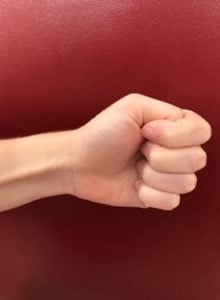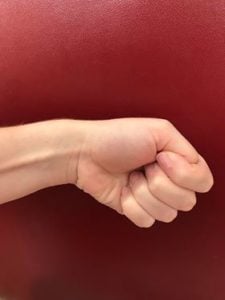Anatomy:
The two main tendons of your thumb, EPB and APL, run closely together at the base of your thumb. These tendons are surrounds by a soft tissue called synovium and are then encased in a tendon sheath. ‘Tenosynovitis’ is swelling or inflammation of the tendon and synovium causing increased friction on the sheath, resulting is pain.
Causes:
Most commonly it is due to an overload or overuse of these tendons. The common activities that cause this condition involve repetitive tasks/movements such as:
- Texting
- Workplace tasks
- Gaming
- Racket sports
- Lifting of children
De Quervains may also be caused by a direct trauma of the area.
Symptoms:
- Crepitus (‘squeaky’ sound as you move your wrist)
- Pain at the lateral wrist
- Pain with lifting activities
- Pain with gripping and wringing activities
- Possible swelling at the base of the thumb
Diagnosis:
The most commonly used test is called the Finkelstein test. This test is very simple and involves making a fist with your fingers around your thumb (see below) and then deviating your wrist towards your little finger. A positive test is a reproduction of pain at the base of your thumb. Further investigation such as ultrasound or MRI may also be used.
Management:
- Rest and avoid aggravating tasks
- Splints – such as a thumb spica, can aid in preventing further aggravation
- NSAIDS – such as ibuprofen. Ice may also be used.
- Physio:
- Modification of tasks and advice, for example better workplace ergonomics, correct lifting technique, adjustment of grips for racket sports etc.
- Specific strengthening exercises, such as resisted thumb movements, gripping and other strengthening exercises.
- Gradual return to exercise and activity
If you are experiencing pain in your thumb or wrist and are having difficulty with daily tasks, please let us know. As mentioned above, Physiotherapy can be a very useful tool in helping reduce your pain and allow you to return to your normal activities.









